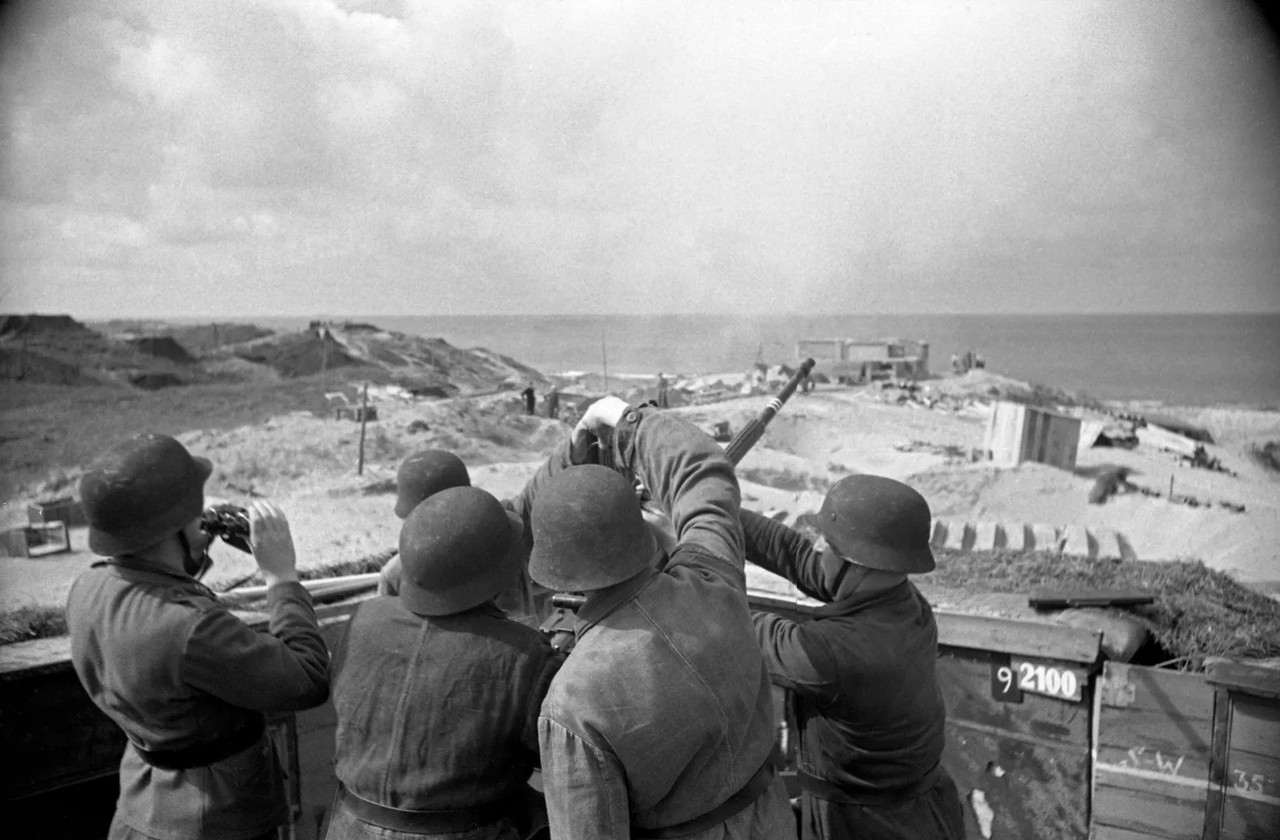From 1942 onward, Den Helder had the status of a Verteidigungsbereich; this meant that it was regarded as a strategically important area where army, navy, and air force were all stationed. Hundreds of light bunkers and 88 heavy bombproof bunkers were built. Coastal batteries were intended to fend off enemy ships. The city itself was evacuated in phases, and by the end of 1944 only very few civilians remained. Just seven thousand people had an Ausweis that allowed them to work in the city. Nearly two thousand houses were demolished by the German army, and another two thousand were destroyed by bombardments.
The major forts within the defensive position were Fort Kijkduin and Fort Dirksz Admiraal. Fort Kijkduin was not primarily intended for combat, but mostly served as accommodation and a training site for naval artillery personnel. Meetings were held there and it functioned as an observation post. A telephone connection ran from Norway to Den Helder, forming a communication line along the Atlantic Wall. At Fort Dirksz Admiraal, originally built in 1811, a large anti-aircraft battery was installed – it can still be seen in the fort today.
The southern boundary of the Verteidigungsbereich lay at the tank ditch near Julianadorp, which was meant to protect the airfield De Kooi. The Luftwaffe constructed several radar installations in the dunes to detect enemy aircraft and to guide their own.
After the war, some bunkers were completely demolished because they stood in the way of coastal protection works. Various bunkers in the dune area were also covered with sand, for instance the flak installations near Huisduinen. These were already located on higher ground, and the additional sand covering raised the dune even further.
Today, all major sites related to Den Helder’s wartime history are linked by a dedicated route (for walking or cycling). The route begins at Fort Kijkduin and is 12 kilometers long.
